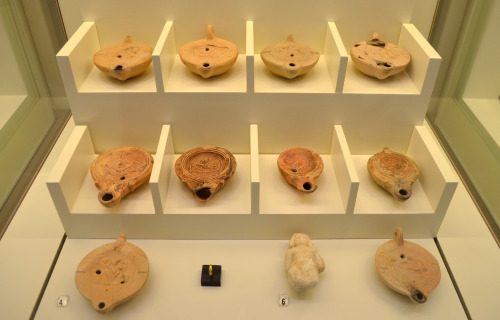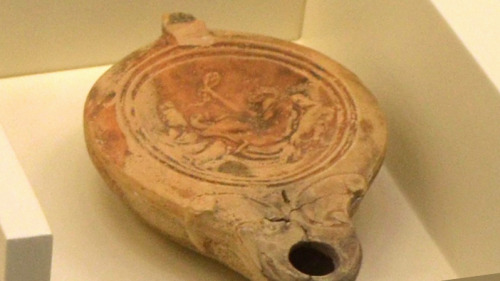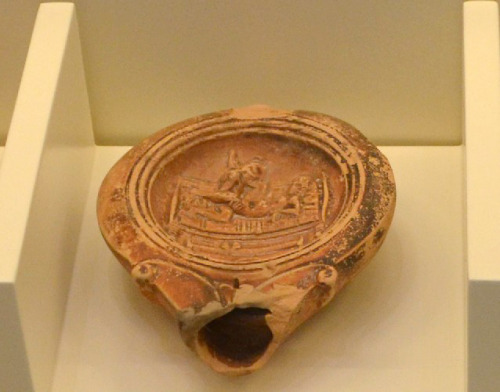The people ( @aimee-maroux , @overcomewithlongingfora-girl, @theperennialsophia ) have spoken.Arch
The people ( @aimee-maroux , @overcomewithlongingfora-girl, @theperennialsophia ) have spoken.Archaeological Museum of PatraTen lamps with representations of erotic scenes. Patras, Roman Period (1st-3rd century A.D)Erotic themes in art were not always purely sexual; they were also of religious and apotropaic significance. The phallus and ithyphallic figures were used in ancient times as symbols of fertility, and also to intimidate evil spirits and avert the evil eye. Phallic symbols on jewellery were a of a protective nature.The representations of erotic scenes on vessels, pots and everyday objects gives us an insight into ancient Greek and Roman private life. These scenes were often of a mocking nature, while others such as the woman with the animal were probably inspired by stories and books of Roman times.**Think the Golden Ass, by Apuleius. The depiction referred is this one, a woman riding an animal and having sex with a man? It’s not very clear what’s going on, but it sure is raunchy. Are all three getting spanked by the second man at the back?Another interesting exhibit relating to lamps was this little hoard of discarded lamps. They were found in a deposit of the Lychnomanteion (oil lamp oracle) of Patras. They are decorated with reliefs and bear the craftsmen’s signatures (2nd-3rd century A.D)The Lycnhomanteion is theorized to be an oracle associated with sailors, and weather forecasting - Patra being a prosperous port city during Roman times. In divination using an oil lamp, it is considered that the lamp was only used once - hence the pile of used but relatively new lamps, and perhaps its decoration was relevant to inquiries, or subjects that concerned the one using them. ————-And remember kids, if selling nudes paid, I wouldn’t be here asking you for money: https://ko-fi.com/isabia -- source link
Tumblr Blog : greek-museums.tumblr.com
#ancient greece#greece#tagamemnon#oil lamps#greek museums#archaeology#museums#ancient culture#patra



